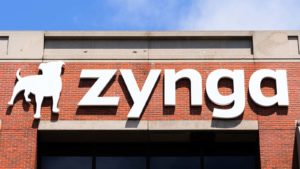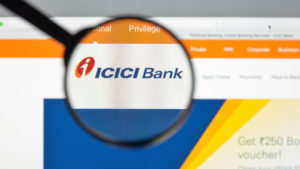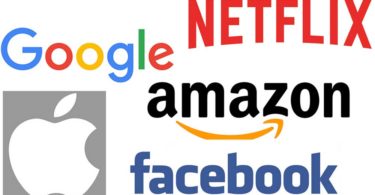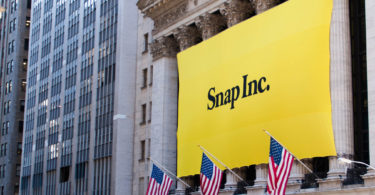When it comes to evaluating investments based on valuations, it could mean anything. Based on share price, cheap stocks to buy will exclude some of the metrics that matter. Looking at price-to-earnings is not always that useful these days.
Stocks, especially those in the technology sector, are trading at lofty valuations. Oil and gas stocks trade at historically low P/Es and are considered cheap. The point is, investors should still avoid the energy sector and look at stocks that trade below $10. This includes the faster-growing technology sector and the drug manufacturing space, which fell out of favor in the last month.
These are seven cheap stocks to buy under $10:
- Hewlett Packard Enterprise (NYSE:HPE)
- Teva Pharmaceutical Industries (NYSE:TEVA)
- Zynga (NASDAQ:ZNGA)
- Fluor (NYSE:FLR)
- Flex (NASDAQ:FLEX)
- ICICI Bank (NYSE:IBN)
- Limelight Networks (NASDAQ:LLNW)
Ever since stocks trended lower last month, these cheap stocks to buy fell sharply. Let’s find out why.
Hewlett Packard Enterprise (HPE)

Source: zakiahza / Shutterstock.com
First up on this list of cheap stocks to buy is HP. Hewlett Packard recently declared a 12 cent dividend after suspending it previously. At a dividend yield of ~5%, investors are selling HPE stock in droves. IDC Worldwide quarterly server tracker reported a 19.8% year-over-year growth in the server market in Q2. HPE enjoyed a statistical tie with Dell Technologies (NYSE:DELL). Still, revenue dropped by 1.8% Y/Y, suggesting a pull-back in sales in the near-term.
Semiconductor stocks like Micron Technology (NASDAQ:MU) and Lam Research (NASDAQ:LRCX) fell sharply in the last month, signaling weak sales ahead. Yet at a forward P/E of 6 times, HPE stock, which also resumed dividend payments, is very cheap.
HPE is embracing Intelligent Edge. Chief Operating Officer Vishal Lall said, “ … there’s a set of data center and cloud technologies and then there is a set of technologies outside of the core data center that is going to get more important as we move forward.” Its Aruba acquisition will enable it to offer compute, security, and connectivity at the edge, outside of the customer’s core data center.
TEVA Pharmaceuticals (TEVA)

Source: JHVEPhoto / Shutterstock.com
Teva spent much of the spring and summer bouncing between $11 – $13. The bottom fell out of TEVA stock in mid-August when New York charged Teva and Allergan, owned by AbbVie (NYSE:ABBV), with insurance fraud over opioid claims. Teva already proposed an opioid settlement on Oct. 24, 2019. The $23 billion drug giveaway should have removed the uncertainties hurting this drug firm.
The discount creates a very attractive entry point for investors who missed the last run-up on Teva. Looking ahead, the company will present new data on Austedo tablets. This is a study that assesses a reduction in involuntary movements in subjects suffering from tardive dyskinesia (TD).
On Wall Street, seven of the 10 analysts covering Teva rate the stock as a “hold.” The average price target is $12.33 (per tipranks). Simplywall.st is even more bullish. The site posted a $28.72 fair value, implying the stock price will more than triple from current levels.
In a downside scenario where Teva’s revenue only grows by 1% annually over the next 10 years, the stock is worth about $14 (per finbox).
Zynga (ZNGA)

Source: Sundry Photography / Shutterstock.com
In the gaming sector, Zynga is out of favor after the stock showed “double topped” recently, unable to break-out above the $10.69 yearly high. In the second quarter, Zynga posted its highest revenue and bookings in its history. Revenue rose 47% Y/Y to $452 million. Operating cash flow grew 47% to $145 million.
Markets are nervous over Zynga’s Peak Games acquisition. Still, mobile revenue is 96% of the total, while bookings topped $498 million in the quarter. Importantly, advertising revenue is trending lower, accounting for 14% of total revenue and down from 21% last year. Long time investors will remember Zynga for its Farmville viral game on Facebook (NASDAQ:FB). Today, the Peak acquisition will accelerate its game development in the next year.
Markets also fret over Apple’s (NASDAQ:AAPL) iOS update, which will severely limit advertiser access to user data. Zynga’s Frank Gibeau said, “As Apple rolls out some of its platform shifts, we also still have Android and other platforms that are continuing to operate in the context that we’re currently comfortable with.”
Games enjoy better revenue stream from Apple than on Android, so any lockout from Apple will hurt Zynga in the near-term.

Zynga has a quality score above the industry but below the major index. As new games captivate users, operating margins will improve.
Fluor (FLR)

Source: Trong Nguyen / Shutterstock.com
Fluor took a non-cash rage that will range from $450 million to $475 million. The goodwill and intangible write-down is a headwind for investors, who saw the FLR stock price fall by half since January.
The write-down is good news because the market is priced in the expected expenses. Fluor is not expecting any cumulative earnings from its financial restatement. In its Q4/2019 conference call, the company said it had $2 billion in cash and marketable securities. The firm reaffirmed its $2.1 billion cash balance, suggesting no major cash burn in the last nine months.
Fluor stock trades at a P/E in the 8 times range. Conversely, a Stock Rover research report indicates a fair value of below $8. Still, if this engineering firm posts a steady recovery in the quarters ahead, the company may become a takeover target.
Flex (FLEX)

Source: Wright Studio/Shutterstock.com
Per Stock Rover, “Flex Ltd is a contract electronics manufacturing company, providing comprehensive electronics design, manufacturing, and product management services to global electronics and technology companies.” In the first quarter, the company posted earnings per share of 23 cents. Revenue fell 16.1% Y/Y to $5.2 billion. When it posted results on July 30, shares traded at around $11.
CEO Revathi Advaithi said that restructuring efforts to streamline operations paused in the quarter. The company wanted to evaluate the impact of the Covid-19 pandemic on results. Though it will focus on growth through new wins in targeted markets in medical, robotics, and beverage appliances, markets are not convinced in the turnaround. Flex stock trades at a forward P/E of around 8 times. Plus, at 5.1% margins in its reliability solutions and 2.5% in its agility solutions division, the business may fare poorly if the downturn resumes.
Four of the five analysts rate Flex as a solid cheap stock to buy. The average price target is $14.60 (per Tipranks).
ICICI Bank (IBN)

Source: Casimiro PT / Shutterstock.com
Operating primarily in India, ICICI posted Y/Y core operating profit growing 14.8%. The average savings account deposit grew 14%. Loans grew by 9.6% domestically while the retail loan book rose 11.3% Y/Y. The bank cut operating expenses by 4.7%.
With provisions down in the quarter by 41.5% Y/Y and profit growth up 36.2%, IBN stock is trending steadily. The stock is up well off its April lows at $7. If loan loss provisions continue to decline, investors may expect shares to trade back at pre-March lows in the $13 – $15 range. As shown in the scores below, this bank has a value score of 92/100. Investors get a good quality stock despite shares already recovering.

Although analysts do not have a price target offered on the stock, the “buy” opinion (per Tipranks) suggests a limited downside ahead.
Limelight Networks (LLNW)

Source: ImageFlow/Shutterstock.com
Last on this list of cheap stocks to buy is Limelight. Limelight shares peaked at over $8 in the summer after posting a surprise 3 cent profit per share. Revenue rose by a solid 28%, to $58.5 million. EBITDA of $4.5 million is an improvement from the negative $2.2 million posted last year.
Limelight stock could have advanced but management took advantage of the market response by selling $110 million worth of convertible senior notes. Since selling pressure accelerated in the last few months, the stock is a cheap stock under $10 to consider.
The company highlighted traffic levels reaching record levels. It expects growth will continue faster than the overall Internet growth rates. Its pipeline is expanding with edge services. As it leads in video delivery and edge services, watch for revenue growing at record highs.
Weak gross margins are a risk if internet traffic wanes. But the 430 basis points in sequential improvement in Q2 may continue into the current quarter.
Read Next: An instant $252 using Apple?!
Dear Reader,
Would you like to know how to generate instant cash from a wide range of stocks…
But without investing a single dime upfront?
This has nothing to do with dividends… taking out a loan… or anything like that.
Best of all, anybody can learn how to do it.
It doesn’t matter if you’re retired… or planning to retire.
It doesn’t matter if you don’t have millions to invest…
What you need is about 10 seconds to execute this simple financial maneuver…
And you could be generating $252… $137… even $2,721…
In the next hour.








